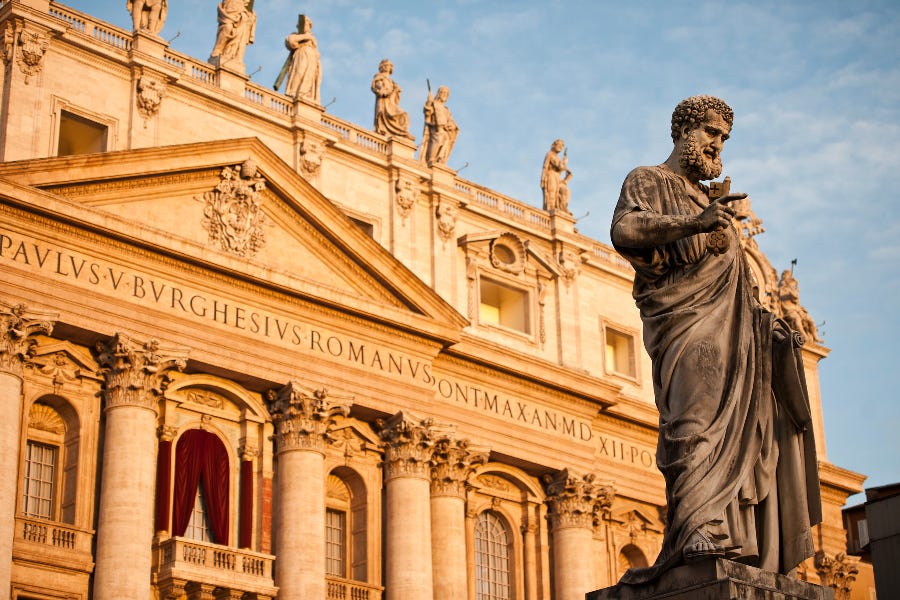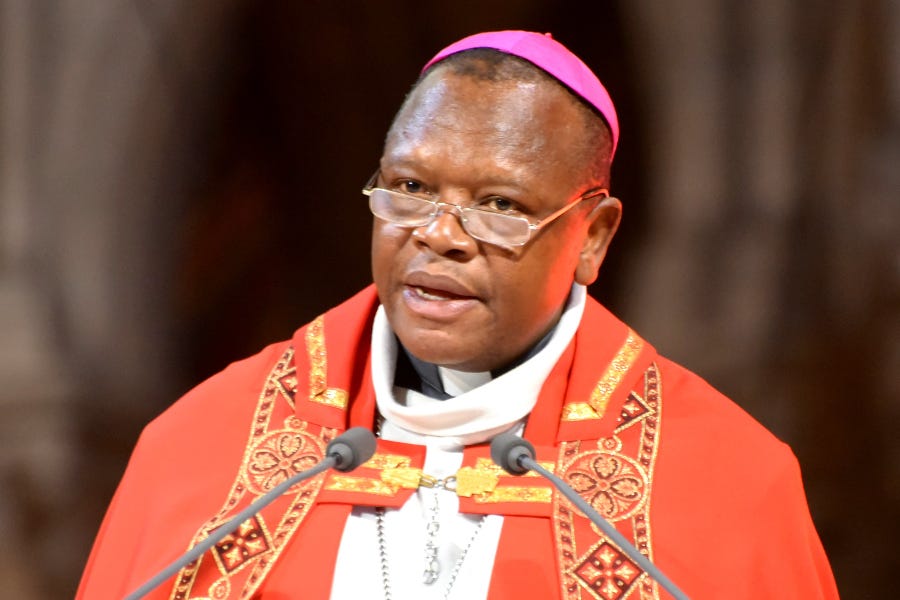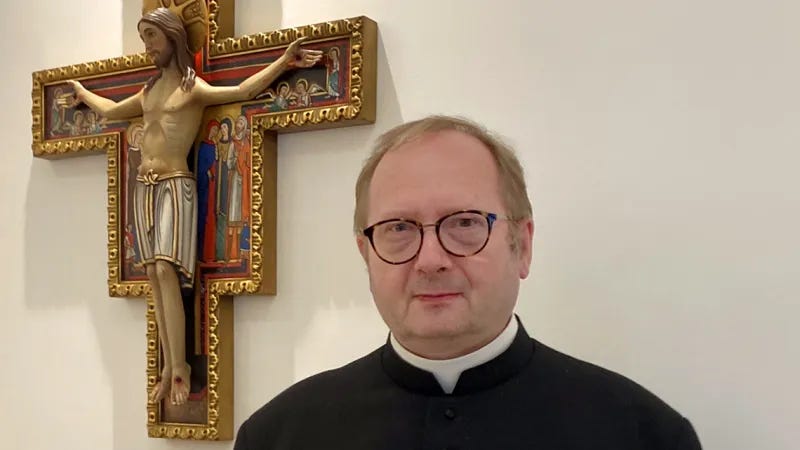For the second year running, the Vatican has published a detailed breakdown of the money flowing into — and out of — its Peter’s Pence fund.
The Vatican has sought to increase the transparency around the fund after it was linked to a financial scandal involving the Secretariat of State that is the subject of an ongoing trial.
What does this year’s report say about where the funds come from? And how does it compare to the previous year’s? The Pillar takes a look.
Wait, what’s Peter’s Pence?
According to the official Peter’s Pence website, the practice of Christians donating money to the successor of St. Peter the Apostle has its roots in the New Testament. It notes that St. Paul encouraged the communities he founded to take up a collection for the Mother Church of Jerusalem (see 1 Corinthians 16:1-4).
The website says that the institution of Peter’s Pence “took on a stable form” in the 7th century, following the conversion of the Anglo-Saxons, and was associated with the feast of St. Peter.
The fund’s sources changed considerably over the centuries. In the Middle Ages, it drew from donations made by local authorities under the pope’s sovereignty. In modern times, it has consisted of a worldwide annual collection on or around the June 29 feast of Sts. Peter and Paul.
Today, the fund, known in Italian as the Obolo di San Pietro, has a twofold aim: supporting the pope’s mission, including the activities of the Roman Curia, and charitable works.
Who donates?
In 2022, the Peter’s Pence fund had an income of 107 million euros ($117 million), with 43.5 million euros coming from donations and 63 million from financial procedures such as the sale of real estate assets assigned to the fund.
The 2022 income is more than double that of 2021, when 46.9 million euros ($51 million) came in. While the level of donations was actually slightly higher in 2021, at 44.4 million euros, the fund made only an additional 2.5 million euros from financial moves.
The 2022 report explains that the donations came from four sources — dioceses (63%), foundations (29%), private donors (5.5%), and religious orders (2.5%) — and in three ways: via the worldwide collection, the website, and bequests.
The sums donated by the dioceses (27.4 million euros) and private donors (2.4 million euros) can be grouped according to country. The total of 29.8 million euros came from the following nations:
U.S (25.3%) 🇺🇸
South Korea (8%) 🇰🇷
Italy (6.7%) 🇮🇹
Brazil (3.4%) 🇧🇷
Germany (3%) 🇩🇪
France (2.8%) 🇫🇷
Ireland (2.1%) 🇮🇪
Mexico (1.4%) 🇲🇽
Slovakia (1.1%) 🇸🇰
All other donating countries together gave the remaining 12.9%.
Here’s how that compared to the 2021 breakdown:
U.S. (29.3%) 🇺🇸
Italy (11.3%) 🇮🇹
Germany (5.2%) 🇩🇪
South Korea (3.2%) 🇰🇷
France (2.7%) 🇫🇷
Spain (2%) 🇪🇸
Brazil (2%) 🇧🇷
Ireland (1.8%) 🇮🇪
Czech Republic (1.3%) 🇨🇿
Canada (0.9%) 🇨🇦
While the U.S. retained the top spot (by a huge margin) in 2022, there was considerable change in the rankings, with South Korea and Brazil rising up the table, and Italy and Germany slipping. But U.S. donations actually fell, from 13 million euros in 2021 to 10 million in 2022.
Where does the money go?
While Peter’s Pence had an income of 107 million euros in 2022, its expenses were 95.5 million euros, leaving a surplus of 11.5 million euros. But that was a considerable improvement on the 18.4 million-euro deficit the year before.
The report broke the expenses into two categories: Contributions granted (93.8 million) and “financial and other” (1.7 million).
It explained that the contributions granted were taken from two sources: 43.5 million from donations and 50.3 million from financial transactions.
Out of the contributions granted, 77.6 million was spent on “funding the activities of service carried out by the Holy See's dicasteries, entities, and bodies,” and 16.2 million on “promoting charity initiatives in favor of those most in need.”
The 77.6 million went toward the expenses of the 70 Vatican dicasteries and entities classified as members of the “Apostolic Mission Group.” This group had total expenses of 383.9 million euros in 2022, of which 20% was covered by Peter’s Pence.
The 77.6 million was spent in the following areas:
Supporting local churches in difficulty and specific contexts of evangelization (41.2%)
Cult and evangelization (12.0%)
Message diffusion (11.2%)
Charity service (9.5%)
Apostolic nunciatures (9.4%)
Organization ecclesial life (4.6%)
Historic patrimony (4.1%)
Academic institutions (2.8%)
Human development (2.6%)
Education, science, and culture (1.6%)
Life and family (1%)
Here’s how that compared to 2021:
Supporting local churches in difficulty and specific contexts of evangelization (19.6%)
Message diffusion (16.1%)
Cult and evangelization (15.5%)
Donations and contributions (14.8%)
Apostolic nunciatures (13.6%)
Organization of ecclesial life (6.2%)
Historic patrimony (5.6%)
Academic institutions (3.7%)
Human development (1.9%)
Education, science, and culture (1.7%)
Life and Family (1.3%)
The biggest change was in the first category, with the amount spent rising from 46.6 million in 2021 to 158.1 million in 2022. The report explained this dramatic increase by saying that “compared to the year 2021, there are a greater number of entities at the service of the Holy Father’s Apostolic Mission.”
The 16.2 million assigned to the needy supported 192 projects in 72 different countries, principally in Africa. The Apostolic Mission Group donated a total of 36 million in 2022, around 45% of which came from Peter’s Pence.
The Peter’s Pence money was spent in three areas: social projects (65.4 %), “supporting the evangelizing presence” of local churches in need (20.4%), and the “expansion and preservation of the evangelizing presence” in new local Churches (14.2%).
The top item in the social projects category was a donation of 1.6 million to war-torn Ukraine. For the “supporting the evangelizing presence” section, it was 91,000 euros for training religious women in Malawi. For the “expansion and preservation” category, it was 91,000 for building two chapels for Brazil’s indigenous communities.
What’s next
This year’s Peter’s Pence collection will be taken Sunday, July 2. Those who miss the collection plate, can donate via bank transfer or credit card.
The publicity materials feature a photograph of Pope Francis blessing a curly-haired child and the tagline “Let us share the joys and sufferings of others, inspired by fraternal love.”
Vatican officials will no doubt be waiting anxiously to see whether donations continue their steady decline in 2023.




